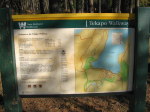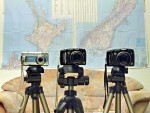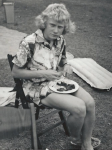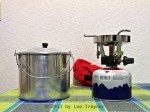
Deck chair left and right: White stripes have a green fringe on the inside and purple on the outside due to chromatic aberration
Another problem that almost all lenses produce is chromatic aberration. Again van Walree has one of the better explanations. Whereas radial (barrel) distortion will interfere with panorama production because the images diverge very quickly from one another – thus making it necessary to have a sharp transition from one photograph to the next or risk having highly divergent control points, chromatic aberration will interfere with the identity of control points in highly contrasting areas. Consider the transition from white to black to white on the left hand side of an image: Continue reading





